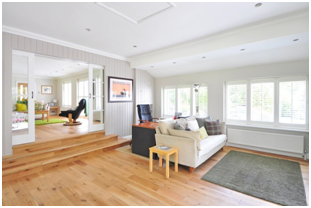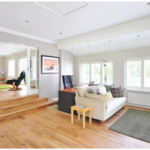Whatever the individual style of your home, whether it’s a traditional or contemporary look you’re going for, having wood flooring can be an attractive and practical choice. You can opt for solid wood or one of the more recent laminated or wood-effect products, and innovations in technology mean that any competent DIYer can lay it with ease.

Image Credit
Types of Floor
There are several different types of wooden flooring, and it’s important to understand the differences. First of all, there’s solid wood flooring: as the name suggests, this means the boards are wood all the way through. This can be laid on top of existing flooring or used in some cases to replace existing floorboards. It’s suitable for almost any type of room, and there is a wide range of different options, whether you want a light or dark finish. It’s environmentally friendly too, as it mostly uses timber from sustainable forests and it can be recycled.
Reclaimed timber is finding many uses, including flooring. It usually comes from old buildings, often schools or commercial premises, and it can deliver some impressive results. This is also an environmentally friendly option.
Engineered wood, or veneer, is made up of a thin layer of hardwood on top of a usually plywood base. This means it’s stable and strong, and it’s cheaper than solid wood. Laminate is similar but usually has a wood-effect plastic top surface. This is hard-wearing and low-maintenance, but cheaper versions can look unconvincing. Finally, there’s vinyl, available in planks or sheets and made completely of plastic with a wood-effect finish. Again, cheaper versions may not deliver a properly ‘wooden’ look.
Pros and Cons
There are advantages and disadvantages to timber flooring. Solid wood from suppliers like http://www.ukflooringdirect.co.uk/solid-wood-flooring is versatile, and provided it’s well sealed can be used pretty much anywhere. Note, though, that any type of wood flooring can be noisy if used upstairs, so you may want to use rugs to deaden the sound.
Reclaimed timber is tough enough for living areas but may not be suitable for bathrooms and kitchens. Similarly, laminates should be avoided in rooms with water, as the planks can swell and split if they get wet. For areas like bathrooms, utility rooms, kitchens and conservatories, a wood-look vinyl floor may be a better option.


